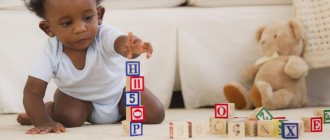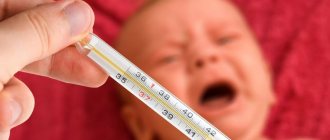Quite often, parents complain that children encounter problems pronouncing sounds that are difficult for them. As a rule, the greatest difficulty for them is hissing sounds; in particular, parents’ questions are related to how to teach a child to correctly pronounce the letters “s”, “k” and others. You need to pay attention to developing this skill in childhood.
The sound C is problematic in pronunciation
Despite the fact that most parents seek speech therapy help most often when the child is already 5 years old, most pediatricians agree that work on sound pronunciation should begin much earlier.
This will prevent the incorrect pronunciation of the sound from taking hold. To carry out such activities it is not at all necessary to have special skills - it is enough to learn only a few simple techniques.
Tips for pronouncing the C sound
What causes incorrect pronunciation?
The most common mistake adults make when communicating with their child is imitating his speech. We lisp with the little man, often distorting the words. It turns out that our speech drops to the level of a baby. Instead of speaking with young children as best we can, pronouncing all sounds and letters clearly, we deliberately make our speech unclear.
Since the child does not hear the correct speech from you, he will not be able to remember it and repeat it. Therefore, in order for your baby to learn to speak correctly, your speech must be clear and intelligible.
The reason for the incorrect reproduction of individual sounds may be a structural feature of the speech apparatus
- The ligament under the tongue is shorter than it should be, making it difficult to move.
- Normal speech is hampered by the size of the tongue (too small or, on the contrary, too large).
- Very thin or, conversely, plump lips, which makes their articulation difficult.
- Deviations in the structure of the teeth or jaw.
- A defect in the hearing aid that prevents you from hearing certain sounds and, therefore, from pronouncing them correctly.
Parents can easily correct some speech defects on their own. The baby experiences the main difficulties when pronouncing hissing sounds - Zh, Ch, Sh, Shch, the letters P, as well as Z, G, K, L, S and C.
Speech development techniques
Conversation between mother and child. The mother spends a lot of time with the baby. Tactile and verbal conversation is important to him. It is necessary to hum to the baby so that he can see mommy’s face and articulation. Comment on your actions. Tell your baby everything you do. Talk to your child so that he can see your face and your articulation. At the age of 1.5 - 2 years, the mother should conduct a conversation with the baby in the usual rhythm and tone. Only when it comes to new words, special attention is paid to articulation and stress. Don't replace complex words with simple ones
Call a spade a spade. Don't forget about verbs. Use contrast. For example: a bird flies - a dog runs. Read poems, nursery rhymes, fairy tales from the very beginning. Play with words, syllables, sounds. It is important to improve the development of fine motor skills. Let your baby play with cereals, pasta, and dough. Children with well-developed fine motor skills are able to think logically, they are attentive, and they begin to talk and write faster.
How to help your child pronounce hissing sounds?
Teaching a child to pronounce the letters Zh, Ch, Sh, and Sh is a little easier than, for example, the letter R. Most often, children have a problem with the pronunciation of hissing Zh and Sh. At the same time, the sound Sh is not as annoying to the ear as the incorrectly pronounced Zh .
Usually the problem with hissing occurs because the baby is unable to relax the tongue and stretch it so that the edges touch the upper lateral teeth.
Therefore, the baby needs to be taught a few simple exercises.
- Let's relax the tongue . Place your tongue on your lower teeth, like a pancake, and tap it with your upper teeth, saying “Ta-ta-ta.” After this, the tongue should lie relaxed. Then you need to slap it with your upper lip and say “Pa-pa-pa.”
- Lifting the tip of the tongue upward . To complete the task, you need chewing candy or gum (it will be a good motivation for your child). You need him to open his mouth 2-3 cm, spread his tongue over his lower lip, sticking out its tip. Place a piece of candy on it and ask your child to stick it to the roof of his mouth behind his upper teeth. Make sure your baby only uses his tongue and not his jaw.
- Blow air through the middle of the tongue . Place a small piece of cotton wool on the table. Let the baby smile and position the tongue as in the previous task. The baby’s task is to blow the cotton wool to the other end of the table without puffing out his cheeks. At the same time, he must pronounce something like the letter F.
- Blow the cotton from your nose . The child opens his mouth slightly, places his tongue so that there is a groove in the middle of it, and the edges almost meet. We place a piece of cotton wool on the nose. The baby should take a deep breath of air through his nose and exhale sharply through his mouth. The cotton wool should fly up.
- We pronounce the sounds Zh and Sh . Ask the baby to pronounce the syllable SA, the tongue should be behind the teeth at this time. Then you need to move the tongue deeper into your mouth. As we move towards the alveoli, the sound from S turns into Sh. To get the sound Zh, we repeat the exercises, first pronouncing the syllable ZA.
- More words with Zh and Sh . Remember or come up with rhymes or tongue twisters where the letters Zh and Sh are often found in words. Repeat them with your child several times.
- We pronounce the letter H. If your baby has increased tongue tone, it will be more difficult for him to cope with the exercise at first. The sound CH consists of TH and Sh. First, the tongue should hit the alveoli, pronouncing TH, and then relax, passing the sound Sh through the slit. These two sounds, first slowly and then faster, should merge into one Ch. After several trainings, the baby will succeed !
Practice your pronunciation with different short rhymes. For example:
- There were jackdaws visiting the wolf cubs,
- There were wolf cubs visiting the jackdaw cubs,
- Now the wolf cubs are making noise like jackdaws,
- And like wolf cubs, the jackdaw cubs are silent.
Types and mechanisms of sound impairment L
With the correct articulation of the sound, the lips open slightly, take the articulatory position of the vowel following it, there is a small gap between the incisors, the tongue relaxes, its tip is raised to the alveolar process and touches the gums, the lateral edges create gaps with the molars, an air flow passes through them with exhalation, the root the tongue is slightly raised, the vocal folds are connected and tremble. The sound is consonant, hard, voiced, oral, sonorant, occlusive, anterior lingual.
Impaired pronunciation of sound is called lambdacism. There are several types:
- Interdental. The correct sound is heard, but the articulatory position is disturbed: the tip of the tongue is located outside, clamped between the teeth.
- Nasal. Pronunciation deviates greatly from correct articulation and acoustics. The tongue touches the palate, part of the air or all of the exhaled stream goes into the nose. A blurry combination is heard.
- Labiolabial (bilabial). It sounds similar to, or English. With such lambdacisism, the phoneme is reproduced by the lips, the tip of the tongue is located deep in the mouth, and is not involved in articulation.
- Labial-dental. Sounds similar to . The lower lip meets the upper teeth, the tongue is located deep in the mouth.
- Side. The air flow exits through one side slot, the second side of the tongue is connected to the upper molars.
- Mitigation. An intermediate sound between hard and soft. The middle of the lingual dorsum rises more than required.
Replacing the sound L with other sounds is called paralambdacism:
- Change to . The back of the tongue arches and the tip drops. A person does not even recognize the replacement; he often thinks that the phoneme is simply missing.
- Change to . The tip of the tongue does not rise, but is relaxed and located deep in the mouth, the back of the lingual back, curving, is adjacent to the soft palate.
- Change to . With such a distortion, the tip of the tongue is located at the bottom of the mouth, and does not rise to the alveolar process, and the middle of the back is bent upward.
- Change to . Articulation involves the lips instead of the tongue.
- Change to . With this variant of paralambdacism, the lower lip is adjacent to the upper teeth. A person usually considers this speech disorder to be simple slurred speech.
In addition to the listed options for incorrect pronunciation of the phoneme, its complete absence is possible.
Learning to pronounce the letter R
The baby begins to pronounce the letter R well only at the age of 5-6 years. If your baby has not yet reached this age, do not panic ahead of time.
There are usually some problems associated with the letter P
- The little man does not pronounce the growling sound at all , it simply falls out of his word. This happens when the letter P is located between vowels. For example, a garage sounds like “ha - already”.
- The baby replaces the sound R with L, Y or Y. It turns out that instead of a rose - “vine”, red - “yzhy”, magpie - “jay”.
- The baby pronounces the sound R, but not the way it should sound in Russian . It either vibrates, like the British, or grates, which is typical for the French.
You can correct deficiencies in pronouncing the letter P by doing some exercises. It’s better to perform them while sitting and keeping your back straight. In this case, the child must see himself in the mirror.
This way he can see how well he completes the task.
- Sail . The child needs to open his mouth wide and lift the tip of his tongue behind his upper teeth. Bend the lower part of the tongue forward slightly and press the edges upward against the molars. You need to repeat this 3 times in a row for 10 seconds.
- Horse . You need to press your tongue tightly against the roof of your mouth and then quickly release it. This will produce a sound reminiscent of the clopping of hooves. Repeat the task at least 10-15 times.
- Turkey . Draw an angry turkey with the baby. The child should throw the tongue out of the mouth, pushing it between the teeth. In this case, you need to pronounce sounds similar to “bl-bl”. The task is performed at a slow pace, gradually speeding it up.
- Let's bite our tongue . Stick the end of your tongue out and open your mouth in a smile. Then slowly bite your tongue with your teeth.
- We brush our teeth . The baby needs to smile widely and move the tip of his tongue along the inner wall of the upper teeth, without moving the lower jaw.
- Who has it longer? Invite your baby to compare who has the longest tongue. Will he be able to reach his chin or the tip of his nose?
- Woodpecker . You need to open your mouth wide and tap your tongue hard on the inside of the gums near the upper teeth. At this time you need to say “d-d-d.”
To prevent your child from getting tired from numerous exercises, take breaks and invite him to roar like a lion. To consolidate the emerging successes, you can additionally learn tongue twisters and words that contain the letter R with your child.
"Find it!"
Find all the letters “K” in this picture and circle them!
And in this picture there are all the letters “T”:
Find all the red letters “M”... And now the blue ones... And now the orange ones, etc.
Now count - how many letters “M” did you find in total?
Pronouncing the letters Z, S and C correctly
When a child does not pronounce the letter S, at the same time he cannot pronounce the other whistling letters and syllables - Z, Ts, Зь, Сь. The reason for this is an underdeveloped articulatory apparatus.
Special exercises will also help correct the situation.
- Drive the ball into the goal . The purpose of this task is to learn how to release a long, directed stream of air. Make gates on the table using blocks or other toys. Roll a loose cotton ball. The kid must, with his lips folded into a tube, blow on the ball and drive it into the gate. While performing the exercise, you should not puff out your cheeks, and the blown air should flow in one long stream, without interruption.
- Song of the tongue . With your mouth slightly open, you need to place your tongue on your lower lip. Then you need to spank with your sponges - “five-five-five” (the tongue sings). The air comes out in a smooth stream without interruption. Then, opening your mouth wide, hold the soft tongue on your lower lip so that it does not curl up. It is necessary that the edges of the tongue touch the corners of the mouth.
- Pancake . It is important to teach your baby to relax his tongue. To do this, he must smile and place the leading edge of his tongue on his lower lip. The smile should not be tense, and the tongue should only hang slightly from the lip.
- We brush our teeth . The exercise is similar to the task for the letter P, only we will brush the lower teeth rather than the upper ones.
The letter Z is paired with the letter C, so its production is done in the same way as the sound C.
The sound T consists of two sounds - T and S, which quickly move from one to another. It is important to teach your baby to separate one sound from another. Ask your baby to say first the long sound “shhhhh”, and then the short “shhhh, tshh, tshh” sound. As a result, the baby will make the sound C.
Halves is a game to consolidate knowledge about already familiar letters.
In the process of learning the alphabet, the process of repetition is important. Still would! After all, by the time you get to “I”, you must try not to forget the letter “A”.
The process of repeating already learned material will be more fun with the game “Halves”!
Cut out beautiful cards with letters, cut them into two parts, mix them.
Invite your child to “fold” letters from two halves.
What about K and G?
The sounds K, G and X belong to the back of the tongue, which implies a high rise of the tongue when pronouncing them. When a child does not pronounce these letters, most often his tongue is simply lazy (with the exception of congenital pathologies that only doctors can correct). To make your tongue work, you need to do exercises.
Downhill skating . Place a cotton ball on your baby's palm. The baby should open his mouth slightly, hold the root of his tongue in a raised position, and lower the tip of it. Then you need to quickly exhale so as to blow the cotton wool from your palm. The sound will be K.
Spoon . Ask your baby to say “ta-ta-ta” slowly. Take a teaspoon and gently move your tongue away by pressing on the front of the back of it. Instead of “ta”, the baby will first get “cha”, and then “kya”. Continuing to press on the tongue, catch the moment when the baby produces a clean “ka.” He needs to remember what position his tongue was in at that moment. Don't worry if it doesn't work out right away.
Regardless of the exercises you do with your child to pronounce which letter, after class, repeat with him as many words, rhymes or songs with this letter as possible.









